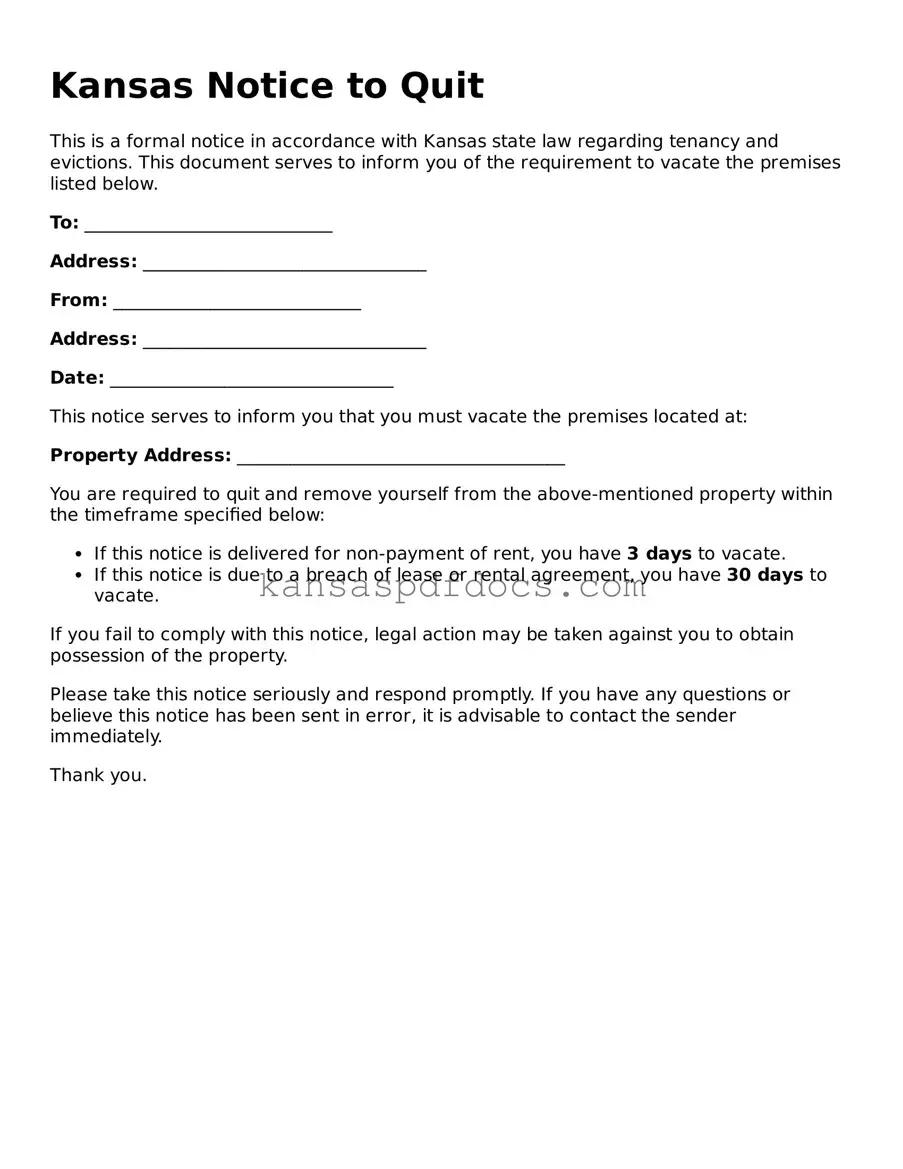The Kansas Notice to Quit form serves as a crucial document in the landlord-tenant relationship, particularly when a landlord seeks to terminate a rental agreement. This form is typically used when a tenant has violated the terms of their lease or failed to pay rent. It outlines the specific reasons for the termination and provides the tenant with a clear timeline for vacating the property. In Kansas, the law requires that landlords provide tenants with a written notice, which must include essential details such as the date of the notice, the address of the rental property, and the grounds for eviction. Additionally, the form must specify the time frame within which the tenant must respond or vacate, ensuring that all parties are aware of their rights and obligations. Understanding the components of the Notice to Quit is vital for both landlords and tenants, as it helps to facilitate a smoother transition and can prevent potential legal disputes. Properly completing and serving this form can significantly impact the eviction process and the overall dynamics of the rental agreement.
